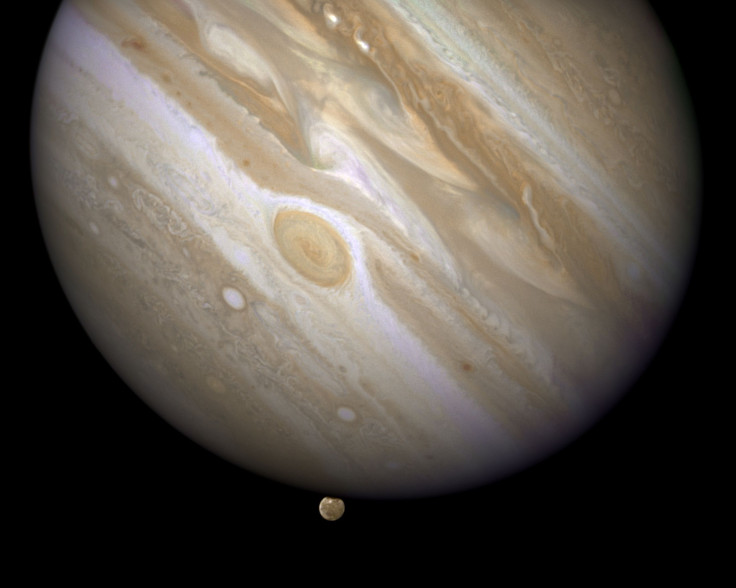Astronomers Discover New Solar System With Planet Identical To Jupiter; Proposed System Might Be The Twin Of Our Own

Astronomers recently found a planet that completely matches Jupiter revolving around a sun-like star, in an effort by scientists to search the galaxy to discover an ideal habitable exoplanet near our solar system, according to a new study. Researchers suggest that the Jupiter-like planet could lead into a new solar system that is similar to our own called Solar System 2.0.
Researchers discovered the potential match of our gaseous giant, Jupiter, located at the Cetus constellation distant to Earth from 200 light years away. The “twin” planet was found orbiting a star called HIP 11915 that is distinctively similar to our sun, according to the study The Solar Twin Planet Search.
In the study, astronomers believe the Jupiter and its twin has the same mass and orbit. The Jupiter-like planet orbits HIP 11915, its star, at the same distance and route that our system's Jupiter and sun have. Jupiter orbits our sun in 12 years or approximately 4,330 days, while its twin was found to circle its own sun in 10 years or 3,600 days. The discovery shows strong evidence that the newly discovered planet has a complete comparison to Jupiter, study suggests.
The discovery has been said by scientists to be unique among the 4,000 potential candidates they already found through the Kepler space telescope for more than two decades, as the newly discovered exoplanet is orbiting at the most probable twin system of our solar system. The spokesman for the European Southern Observatory, Richard Hook, said that the discovery is “the most precise match," then added that the planet is "the best Jupiter-like object around a sun-like object."
The newly found solar system was discovered by a Brazilian team of astronomers at the University of Sao Paulo. The team used 3.6-meter telescope, tapping a powerful technology for finding exoplanets by analysing light coming from stars it orbit. The Jupiter twin was found through the process wherein the telescope detects the silhouette of a planet passing in front of its sun-like star at the right angle relative to Earth.
The researchers are committed in the discovery as Jupiter has a great contribution to Earth’s formation and preservation, recent study said. Jupiter plays a big role in our solar system in maintaining stability, as scientists say its distance from the sun in our solar system as the fifth and largest planet allows it to exert its gravity properly. Recent studies have found that the gravitational force of Jupiter supported the planetary formation in the inner solar system by removing objects that may have crowded orbits.
Jupiter is also considered to be helpful to life on Earth, researchers said. The planet, dubbed as the “gravitational bully” by astronomers, has a gravitational strength second in strength only to that of our sun. It helps keep flying objects such as asteroids in line and away from hitting Earth and other planets in the inner part of the system.
Therefore, even few facts were only found about the exoplanet and its sun, researchers say that the discovery of the Jupiter twin around HIP 11915 is expected to add hope on further planetary studies. The lead author of the study, Megan Bedell, said that the discovery is "an exciting sign that other solar systems may be out there waiting to be discovered."
Researchers said that they are still analysing the light from HIP 11915 to find more exoplanets and considering the possibility to discover an Earth-like planet orbiting the sun-like star together with the Jupiter twin. The study added that astronomers have found chemical signatures that hint the existence of another planet in the said system, but Hook said that "there are indications that there probably are, but there is no direct evidence."
To contact the writer, email: darwinsamuelm.malicdem@gmail.com





















